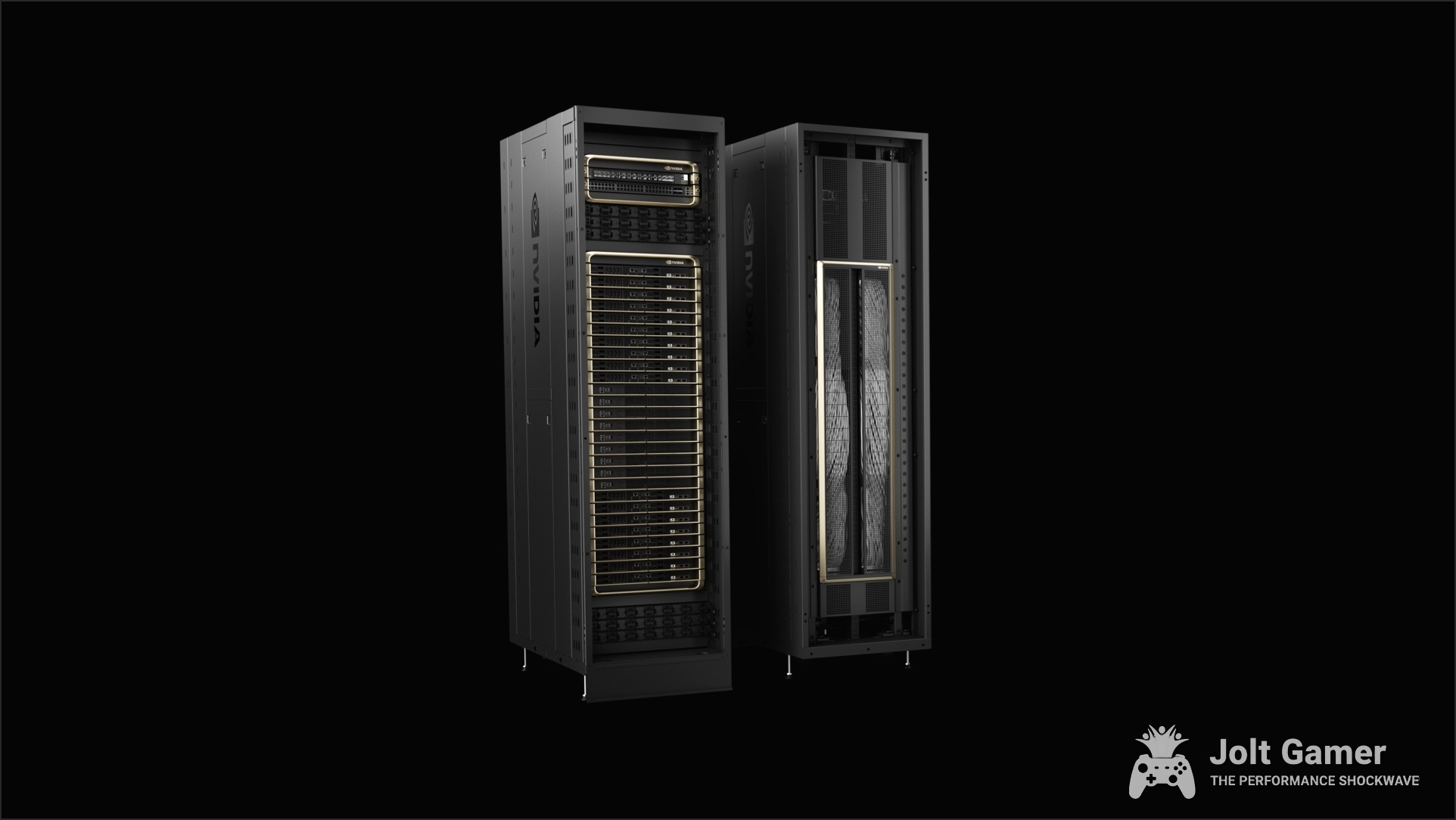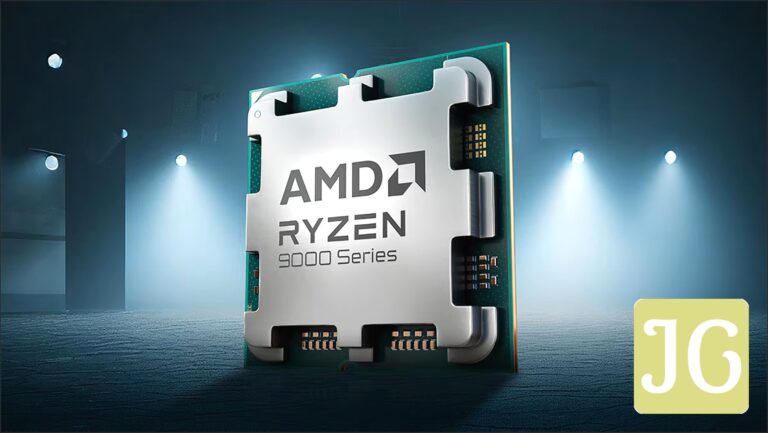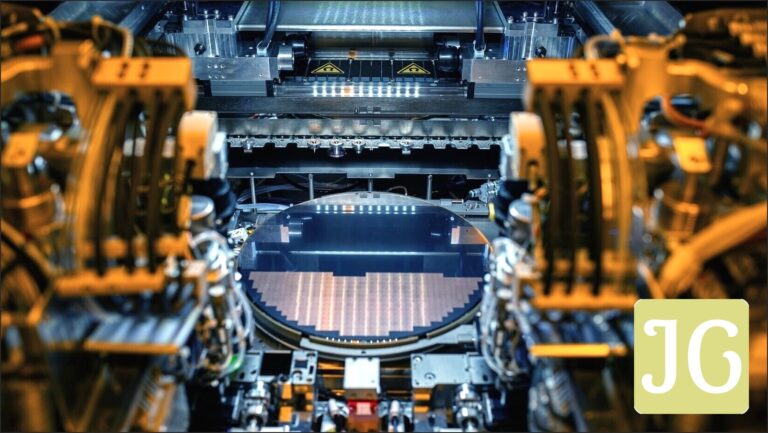Nvidia, a name long synonymous with high-performance PC gaming, is undergoing its most profound transformation yet. While GeForce GPUs continue to power millions of gaming rigs worldwide, the company’s strategic focus has decisively shifted towards AI, positioning itself as the architect of a new industrial revolution. This isn’t merely about developing faster chips; it’s about building ‘AI factories’ – vast, multi-gigawatt data centers designed to train and deploy intelligence at an unprecedented scale. But what does this monumental pivot mean for the future of computing, the global tech landscape, and indeed, for the very essence of gaming itself?
Nvidia’s vision for AI infrastructure includes deploying ‘million-GPU AI factories‘ capable of handling 10 gigawatts of power, a scale that promises to redefine computational capabilities for the next generation of AI.
The Blackwell Blueprint: Engineering the AI Future
At the core of Nvidia’s AI revolution is the Blackwell architecture, succeeding the venerable Hopper platform and meticulously designed to power real-time generative AI and trillion-parameter large language models (LLMs). Unveiled with much fanfare, Blackwell represents a significant leap in performance, efficiency, and scalability, promising up to 25x less cost and energy consumption for LLM inference compared to its predecessor. Named in honor of pioneering mathematician David Harold Blackwell, this platform is built from the ground up to tackle the most demanding AI workloads, positioning it as the engine for this new industrial revolution.
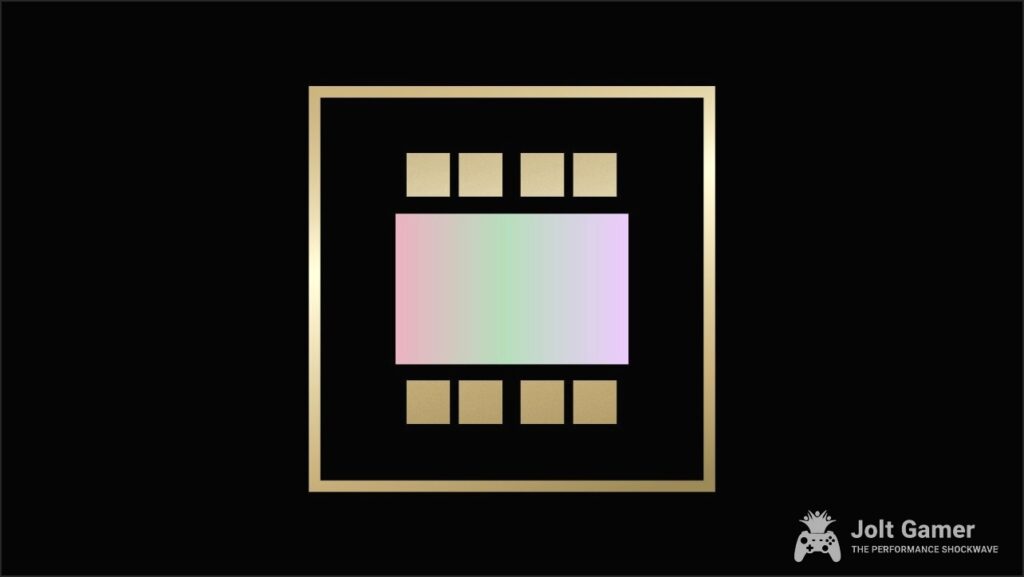
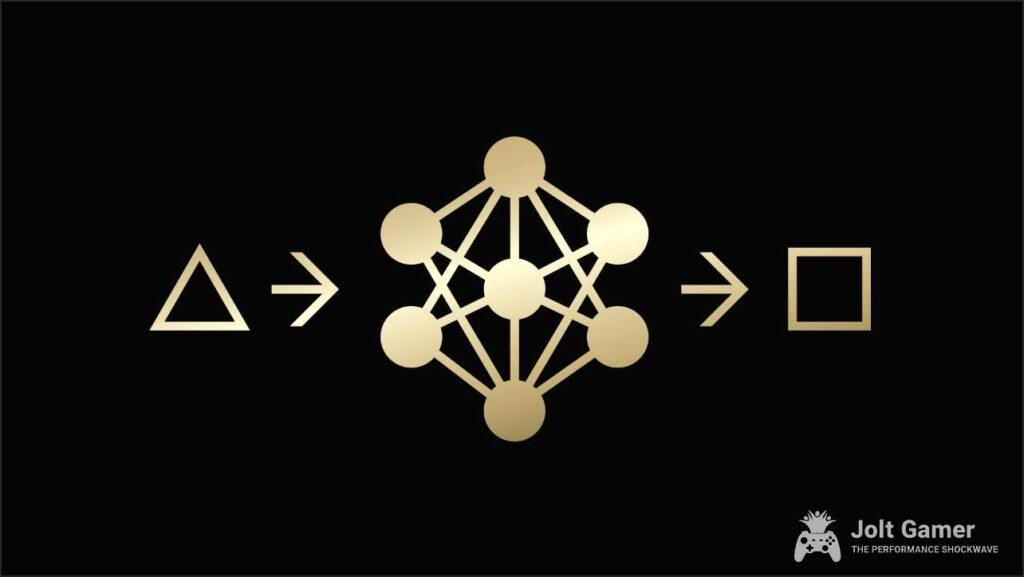

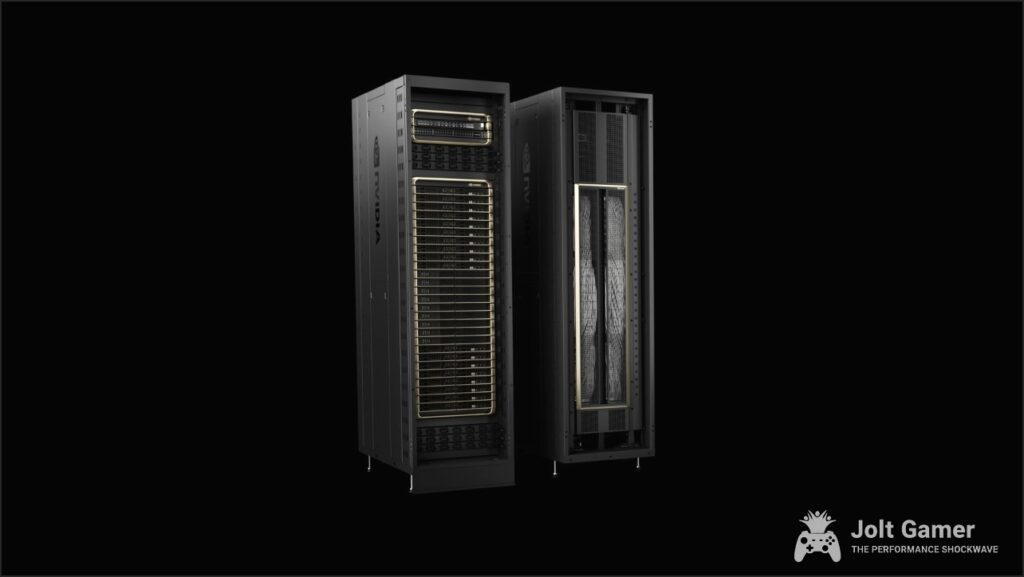
- 208 Billion Transistors: Built on a custom TSMC 4NP process, featuring two reticle-limited dies connected by a 10 TB/s chip-to-chip interconnect.
- Second-Generation Transformer Engine: Leverages custom Tensor Core technology and new precisions like 4-bit floating point (FP4) AI, doubling performance and model size while maintaining accuracy.
- NVIDIA Confidential Computing: Industry’s first TEE-I/O capable GPU, offering hardware-based security for sensitive data and models with near-identical throughput.
- Fifth-Generation NVLink: Connects up to 576 GPUs with 1.8TB/s bidirectional throughput per GPU, enabling 130TB/s bandwidth within a 72-GPU NVLink domain.
- Dedicated Decompression Engine: Accelerates data analytics and science workflows, boosting performance in databases and Apache Spark with 800 GB/s throughput.
- Reliability, Availability, and Serviceability (RAS) Engine: AI-powered predictive management monitors thousands of data points to minimize downtime and optimize maintenance.
NVIDIA Blackwell Ultra GPU Key Specifications
| Specification | Value |
|---|---|
| Transistor Count | 208 Billion |
| Manufacturing Process | TSMC 4NP |
| Die Interconnect | NVIDIA High-Bandwidth Interface (NV-HBI), 10 TB/s |
| Streaming Multiprocessors (SMs) | 160 |
| Tensor Cores | 640 (Fifth-Gen, NVFP4, FP8, FP6 optimized) |
| Dense NVFP4 AI Compute | 15 PetaFLOPS |
| HBM3e Memory | 288 GB |
| HBM Bandwidth | 8 TB/s |
| NVLink 5 Bandwidth (per GPU) | 1.8 TB/s bidirectional |
| NVLink-C2C to Grace CPU | 900 GB/s |
| PCI-Express Interface | x16 Gen 6 (256 GB/s bidirectional) |
| Max Power Draw | 1,400W |
| MIG Partitioning | Up to 7 instances (e.g., 2x 140GB, 4x 70GB, 7x 34GB) |
Building the AI Factories: Partnerships and Global Ambition
Nvidia’s vision extends far beyond individual chips; it’s about creating an entirely new infrastructure model: the ‘AI factory.’ These multi-gigawatt data centers, housing millions of Nvidia GPUs, are designed to be the engines of the generative AI era. A landmark partnership with OpenAI, which Nvidia CEO Jensen Huang declared ‘the biggest AI infrastructure project in history,’ exemplifies this ambition, with plans to deploy at least 10 gigawatts of Nvidia systems. OpenAI CEO Sam Altman emphasizes Nvidia’s unique capacity to deliver the necessary scale and speed for the ‘next frontier of AI models,’ including agentic AI and multimodal data processing. This collaboration, which began with Huang personally delivering the first DGX system to OpenAI in 2016, now represents a billion-fold increase in computational power.
Beyond OpenAI, major cloud providers like Amazon Web Services, Google, Microsoft, and Oracle are committing to Blackwell’s deployment, seeing it as critical for their hyperscale AI ambitions. Nvidia is also actively involved in ambitious AI infrastructure build-outs in the Middle East, partnering with nations like Saudi Arabia and the UAE to launch new companies such as HUMAIN. These regions, recognizing AI’s strategic importance and possessing abundant energy resources, view AI as a critical solution to augment labor and drive national development, further solidifying Nvidia’s global footprint and showcasing the platform’s widespread adoption.
Geopolitical Currents: Navigating the Chip Wars
Nvidia’s ascent in AI is occurring amidst a turbulent geopolitical environment, particularly concerning chip controls and the crucial China market. Despite a historical 95% market share and a 30-year presence, Nvidia faces significant challenges, including losing ground to domestic competitors like Huawei due to US export restrictions. The US government, viewing the AI race as a pivotal, long-term endeavor, is committed to bolstering domestic manufacturing and ensuring American technological dominance, impacting Nvidia’s global strategy and creating complex trade-offs for the company.
Jensen Huang, Nvidia CEO, emphasized the critical need for the US to ‘go compete’ with China in AI chips, asserting that China is merely ‘nanoseconds behind’ the US. He characterized China as a ‘formidable, innovative, hungry, fast-moving, underregulated’ competitor, attributing its strength to a distributed economic system.
The ban on Nvidia’s H20 chips for China, designed to comply with prior administration rules, highlights the complexities of this landscape. Nvidia has made substantial financial sacrifices, including a reported $5.5 billion inventory write-off and walking away from $15 billion in sales, underscoring the profound impact of these policies. China, in turn, is aggressively accelerating its domestic AI infrastructure, mandating that data centers source at least 50% of chips from domestic manufacturers and actively transitioning major firms like Tencent to homegrown silicon, further intensifying the competition and push for technological independence.
Gaming’s Enduring Legacy in the AI Era
While AI undeniably dominates the headlines, Nvidia’s CEO Jensen Huang consistently acknowledges the foundational importance of gaming and GeForce to the company’s ecosystem. The GPU, initially conceived at a Denny’s to accelerate video game graphics, became the bedrock for Nvidia’s future. This core technology, refined over decades, underpins not only AI development but also RTX PRO, Omniverse, robotics, and countless other applications. Nvidia’s deep expertise in driver abstraction and ecosystem development, honed through its commitment to game developers and evidenced by its separate game developer conferences, remains a critical asset even as its focus expands into the AI realm. The company’s unique ability to scale its technology, from individual GPUs to vast data centers, is a direct legacy of its gaming roots.
The Community’s Pulse: Hype, Skepticism, and Control
The PC gaming community, while often impressed by technological advancements, views Nvidia’s AI market strategy with a mix of awe and apprehension. Discussions online reveal a palpable cynicism regarding geopolitical tensions and perceived monopolies in the AI sector, alongside skepticism about the long-term sustainability of the AI market boom and a deeper contemplation of who truly controls the narrative of the future.
Representative community sentiments include cynical frustration: ‘Oh, but wait! The CCP said US chips are evil! They’re bugged! They’re a monopoly! China would never allow state backed monopolies! and China so good they dont need them chips anyways!’ There’s also clear skepticism about market stability: ‘So no ai bubble?’ And a deeper contemplation about control: ‘Watching this, I couldn’t help but think of Selwyn Raithe. The way he framed the global AI race in his book feels eerily similar to what’s unfolding with Alibaba and Nvidia, where technological tools aren’t just about progress, but about who controls the narrative of the future.’
Jensen Huang’s Vision: An AI-Driven Future
Jensen Huang, Nvidia’s co-founder and CEO, has become a Silicon Valley icon, his reputation soaring with the rise of AI. Known for his distinctive style and intense leadership, Huang attributes his success to ’61 years of hard work every single day.’ Despite his demanding nature, he maintains an optimistic vision for AI’s future, foreseeing progress and prosperity. He believes increased productivity from AI will lead to earnings growth and, contrary to some fears, will not diminish overall employment, as he has ‘never seen one company that had earnings increase and not hire more people.’ Huang emphasizes the enduring need for human judgment and involvement, advocating for humans to remain ‘in the loop’ even as AI capabilities expand exponentially.
AI’s Promise vs. Peril: The Societal Debate
Pros
- Increased Productivity & GDP Growth: Jensen Huang envisions AI as a driver of economic prosperity, leading to earnings growth and job creation.
- Transformative Applications: Nvidia’s AI powers breakthroughs from predicting weather 3,000 times faster to designing new protein-based drugs and advanced humanoid robots.
- Augmenting Labor: AI is seen as a solution to global labor shortages, allowing nations to participate fully in the AI revolution.
- Falling Cost of Intelligence: OpenAI envisions a future where the cost per unit of intelligence decreases, enabling wider applications without resource limitations.
Cons
- Job Obsolescence: Concerns exist that some jobs are likely to become obsolete, as noted by Bill Whitaker.
- Risks to Humanity: Over 600 top AI scientists and ethicists have urged caution, warning of AI’s potential dangers.
- Ethical Oversight: The immense power of AI necessitates critical consideration of its long-term societal impact and the need for human judgment.
- Control of Narrative: The ‘Fandom Pulse’ highlights apprehension about who controls the future narrative through technological dominance.
Key Takeaways: Nvidia’s AI Blueprint for the Future
- Blackwell Architecture: Nvidia’s latest GPU architecture (including Blackwell Ultra) is in full production, offering unprecedented performance, efficiency, and scalability for generative AI and LLMs, with innovations like FP4 precision and advanced interconnects.
- ‘AI Factories’ Vision: Nvidia is spearheading the creation of massive ‘AI factories’ – multi-gigawatt data centers housing millions of GPUs – through landmark partnerships with entities like OpenAI and global build-outs in regions like the Middle East.
- Geopolitical Headwinds: The company navigates significant challenges, including US-China chip controls, bans on certain chips, and competition from domestic players like Huawei, impacting its market strategy and financial performance.
- Gaming’s Foundation: Despite the AI pivot, Nvidia acknowledges gaming and GeForce as foundational to its technological prowess, with GPU innovations originating from gaming now driving the AI revolution.
- Community Concerns: The PC gaming community expresses cynicism about geopolitical influences, skepticism about an ‘AI bubble,’ and apprehension regarding who controls the future narrative through technological dominance.
- Jensen Huang’s Leadership: CEO Jensen Huang remains a central figure, championing an optimistic vision for AI’s role in driving productivity and prosperity, while advocating for human involvement in the loop.

